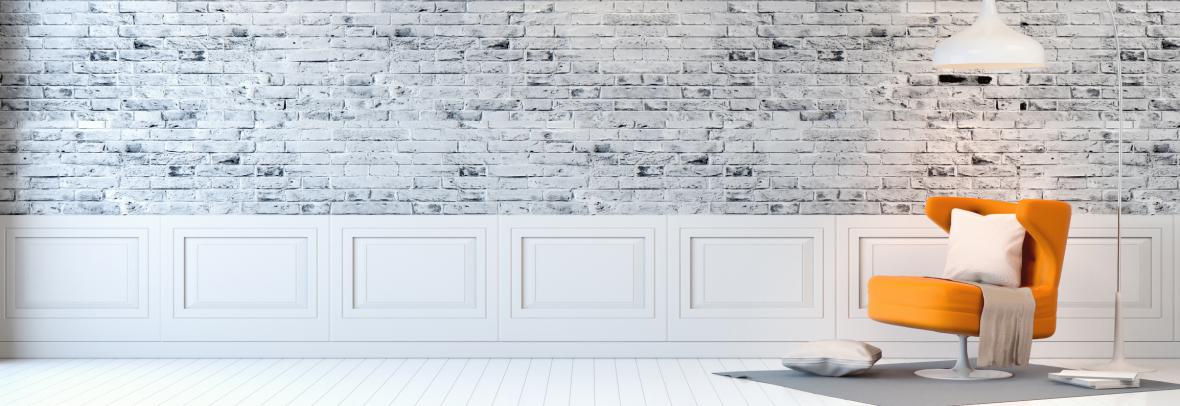
3 Things to Know About Virtual Staging
Virtual staging cuts costs by up to 97% and helps homes sell faster. Be sure to show original photos too and avoid misleading enhancements.
NEW YORK — What if you could stage every home, impress buyers, and spend less – a lot less?
Professional staging often ranges from $500 to several thousand dollars for luxury properties. The alternative – virtual staging powered by artificial intelligence – can reduce staging expenses by up to 97%.
Virtual staging adds digital furnishings, décor, and design elements to photos of empty or under-furnished homes to help potential buyers visualize the space.
Instead of physically bringing in furniture, you or an online staging company uses AI-powered software to digitally augment interior property photos, making rooms appear professionally staged and styled.
With every home buyer starting their home search online today, virtual staging is fast becoming a powerful tool to help agents sell homes faster and often for more money. But there’s a right way and a wrong way to do it.
Here are two big dos and one important don’t that every agent should know.
Do: Stage your listings virtually or physically
Here’s something top-producing agents agree on: staged homes sell better. That’s not just opinion – it’s backed by new research.
According to the 2025 NAR Profile of Home Staging, 83% of buyer’s agents said home staging makes it easier for buyers to visualize the property as a future home. And that matters – a lot. Emotional connection is what turns a casual looker into a serious offer.
It also translates into dollars. One in six buyers’ agents said staging increased the offer price by 1% to 5% compared to similar non-staged homes. On the listing side, one in five sellers’ agents reported the same increase, with 10% seeing gains of 6% to 10%.
Need more incentive? A separate report from the Real Estate Staging Association (RESA) found that homes that were staged before listing spent 73% less time on the market than their non-staged counterparts. Past NAR studies show staged homes sold for an average of between 5 and 20% more than non-staged homes.
But physical staging isn’t always feasible. It’s expensive, labor-intensive, and time-consuming. That’s where virtual staging shines.
According to NAR, 58% of agents say buyers are disappointed by what homes look like in person compared to the polished versions they see on HGTV-style shows. Nearly half of agents (48%) said buyers think homes should look like they do on TV.
That gap between expectation and reality can kill buyer interest fast. Virtual staging helps you bridge that gap, especially for vacant or outdated homes, giving them a clean, stylish, and aspirational look that draws buyers in.
And it’s not just buyers who benefit. Listing photos are your first impression, and staged images perform better in the MLS, on portals, and in social media ads. One study found reports that virtually staged listings receive 40% more views compared to non-staged listings, along with 31% more inquiries and buyers spending 20% longer viewing the photos.
Pro tip: Match the staging style to the home’s architecture and local trends. Don’t throw ultramodern décor into a cozy Cape Cod.
Do: Always pair a virtually staged photo with the original
It’s not just about making homes look good; it’s about doing so ethically and with transparency. Agents need to show both the enhanced fully staged interior and the original empty one.
It’s best to check with your MLSs as they either require or strongly encourage agents to:
- Label all virtually staged images
- Include the original, non-photo
- Avoid misleading enhancements like changing room dimensions or removing flaws
This matters. While virtual staging is a tool, it should never deceive. Showing both versions builds trust with buyers and reinforces your credibility.
Pro tip: Some virtual staging tools include a watermark or let you download side-by-side before/after comparisons – making compliance easy.
The big don’t: Never violate MLS rules or mislead buyers
Are you tempted to take a shortcut and post your virtually staged photos? Don’t. MLS rules around virtual staging vary by region but almost universally require transparency.
Many MLSs prohibit uploading virtually staged images unless:
- The alterations are cosmetic only (no structural changes)
- The images are clearly labeled as virtually staged
- The original photos are included or available
Not following MLS rules can mean fines or, worse, buyers reporting ethical violations. Even more importantly, a lack of transparency can erode a buyer’s trust, especially if they walk into a home expecting something they saw online that doesn’t exist.
Also, avoid editing out imperfections. Virtually hiding damage, poor layouts, or outdated features can easily cross the line into misrepresentation.
Pro tip: If your MLS doesn’t allow virtual staging, you can still use it in social media, email marketing, or your website, but it must be clearly labeled.
One last thing: Staging still pays off
The screen is the new front door in a digital-first real estate world. Whether you’re trying to win listings or buyers, virtual staging can help you do it both faster and more cost-efficiently.
If you are new to virtual staging and need technical assistance or have a question, Tech Helpline is ready to assist, helping more than 730,000 real estate pros in North America solve their technology issues every day. Tech Helpline is only a chat, email, or phone call away.
Source: Tech Helpline
© 2025 Florida Realtors®
